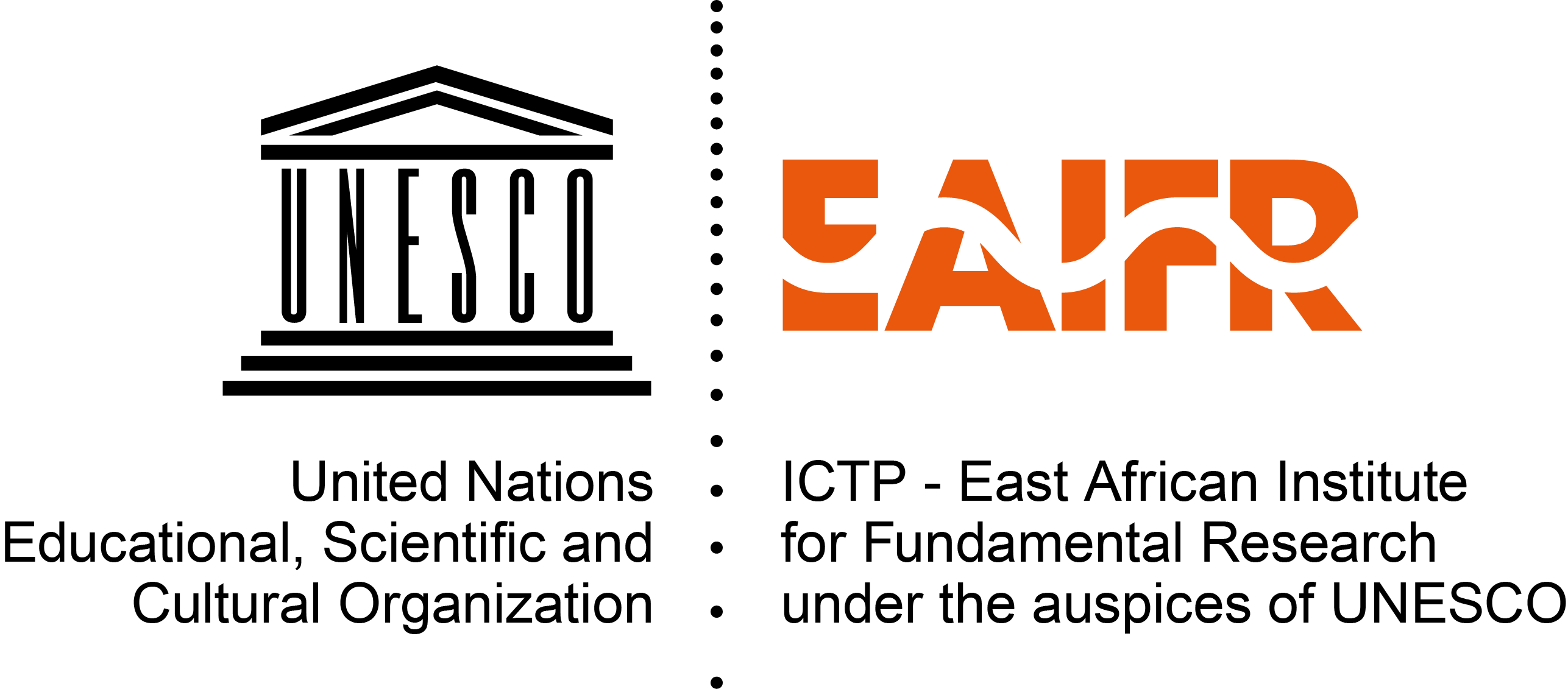ICTP-East African Institute for Fundamental Research
KIST2 Building CST
Nyarugenge Campus
University of Rwanda
Kigali, Rwanda
GEO@EAIFR Webinar Series 2022
Professor Atalay Ayele from the University of Addis Ababa will discuss active rifting in the East African Rift and the challenges in disaster risk management

The East African Institute for Fundamental Research (EAIFR) and the International Centre for Theoretical Physics (ICTP) wish to inform those who may be interested of a GEO@EAIFR webinar. This seminar will take place on November 15, 2022 and will be broadcast live on ZOOM. It will also be recorded and later posted on the ICTP-EAIFR YouTube channel, where one can find the previous recorded GEO@EAIFR webinars. Below all the details:
Speaker: Professor Atalay Ayele, Institute of Geophysics, Space Science and Astronomy, Addis Ababa University, Ethiopia
Title: Active Rifting in the East African Rift and Challenges in disaster risk management
When: November 15, 2022 at 16:30 (Kigali time).
Register in advance for this meeting by clicking here.
All are very welcome.
Biography:
Atalay Ayele is Prof. of Geophysics (Seismology) who was until recently director of the Institute of Geophysics Space Science and Astronomy of Addis Ababa University and currently heading the seismology unit. He is involved in teaching and advising postgraduate students, coordinating and running the national seismic station network of the country, data analysis and research. He served as chairman of the coordinating committee for the EAGLE (Ethiopian Afar Geoscientific Lithospheric Experiment) which was conducted from 2001-2003 in the main Ethiopian rift and it is one of the successful projects in that region in geophysics discipline. He was also involved in broadband seismic experiments of the French (Strasbourg) and Penn State University working groups and the two projects are winded up successfully. He was Coordinator of sub-Saharan Africa Global Earthquake Model (GEM) and founding president of the African Seismological Commission (AfSc). He is Visiting Fellow of Leeds and Bristol Universities. Prof. Ayele is fellow of the Ethiopian Science Academy. He is the 2021 international award recipient of the American Geophysical Union (AGU) in recognition for making an outstanding achievement. He has been serving the Eastern and Southern Africa Regional Seismological Working Group (ESARSWG) different capacities and as one of resource person for training and capacity building efforts in the region.
Abstract:
The roughly 3000 km long East Africa Rift system (EARS) is one of the striking features of the African continent that captures all stages of rift development from the most juvenile to nascent seafloor spreading in Okavango delta and Afar depression, respectively. It provides a natural laboratory for studying a fundamental, and yet enigmatic, component of plate tectonics. A mechanism for rupturing thick, cold, continental lithosphere is not readily apparent in conventional models of mechanical stretching. However, magma production weakens the plate and serve to localize strain, thus better facilitating rifting. Studies of seismicity and volcanism provide insights into this problem and a variety of geophysical, geochemical and geological studies can be used to better understand the role of the crust and mantle in continental breakup.
Permanent seismic station distribution is sparse in the continent but some focused and detailed studies have been conducted using temporary broad seismic networks in collaboration with overseas researchers. Earthquakes of magnitude M > 7.0 are observed in EARS from instrumentally recorded seismicity (the 1910 Rukwa earthquake in Tanzania, the 1990 earthquake in South Sudan and the 2006 Machase earthquake in Mozambique) which is a wakeup call for the fast-growing construction industry in the region. It is also inferred that the EARS is more active than we think, from recently recorded seismicity, which requires collaborative efforts to enhance studies in the region both for basic science research and disaster risk management purposes.



